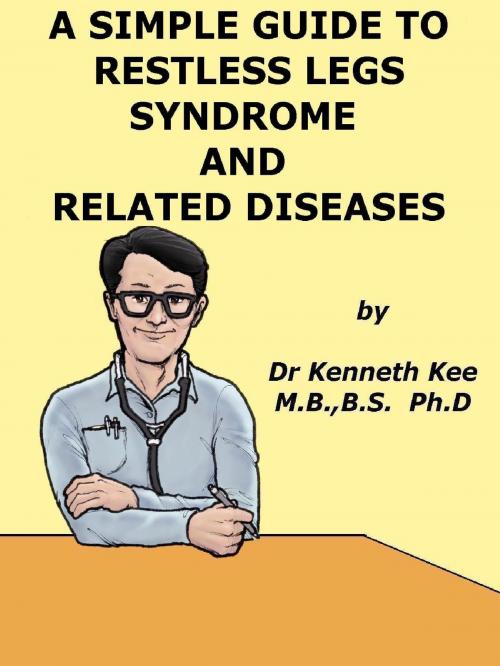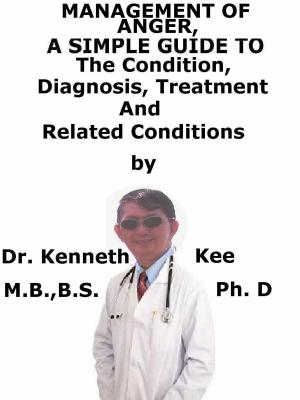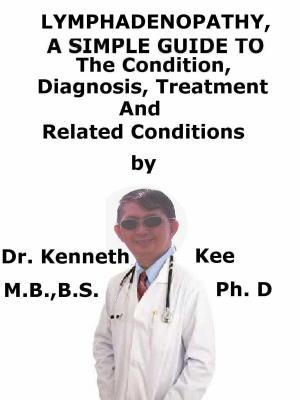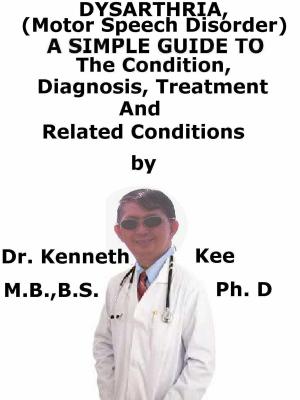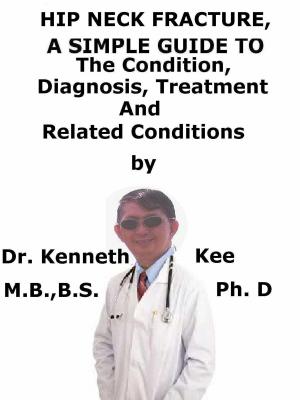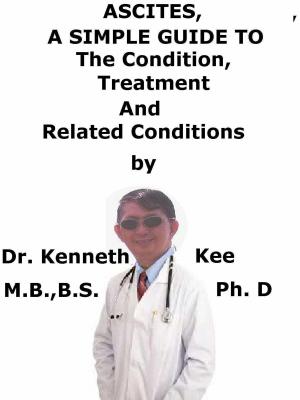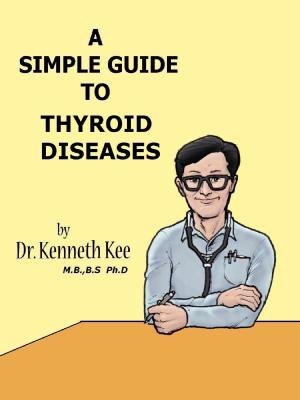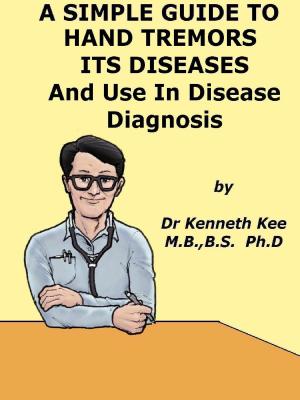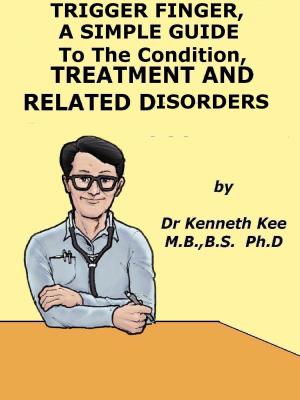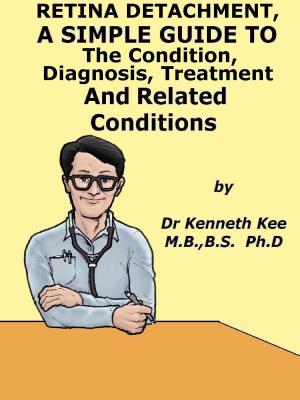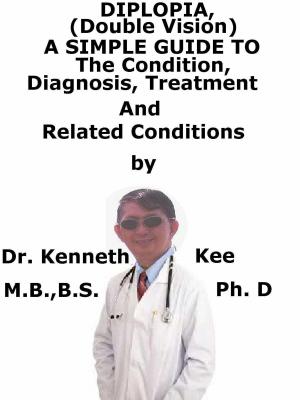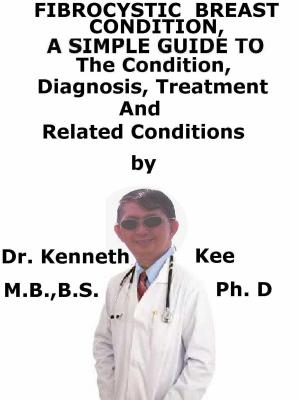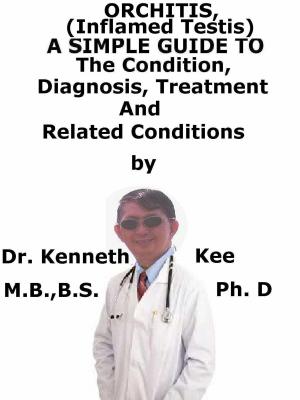A Simple Guide to Restless Leg Syndrome and Related Diseases
Nonfiction, Health & Well Being, Health, Ailments & Diseases, Nervous System & the Brain, Medical, Specialties, Internal Medicine, Neurology| Author: | Kenneth Kee | ISBN: | 9781311138934 |
| Publisher: | Kenneth Kee | Publication: | March 15, 2014 |
| Imprint: | Smashwords Edition | Language: | English |
| Author: | Kenneth Kee |
| ISBN: | 9781311138934 |
| Publisher: | Kenneth Kee |
| Publication: | March 15, 2014 |
| Imprint: | Smashwords Edition |
| Language: | English |
Introduction
Ode to Restless Legs Syndrome
Restless Legs Syndrome every one hates you.
You rob people of the sleep and make them blue
Out of the blue my legs started feeling funny
My RLS leaves me with very little energy
You make me have the urge to move my legs
I feel that ants are crawling on my skin and laying eggs
I only feel comfortable when my legs are kicking
These sensations becomes worse when I am sleeping
Even at rest you come and irritate me
When can I ever stop suffering and be free
Because of you I had to quit the job I loved
Every day I watched for triggers that make my RLS worse
Please help me doctor be kind
I think that I am going out of my mind
Please help me to stop my legs from fidgeting
And allow me at least some hours of good sleeping
-An original poem by Kenneth Kee
Interesting Tips about the Healthy Legs and Nerves
A Healthy Lifestyle
1. Take a well Balanced Diet
2. Keep bones and body strong
Bone marrow produces our blood
Eat foods rich in calcium like yogurt, cheese, milk, and dark green vegetables.
Eat foods rich in Vitamin D, like eggs, fatty fish, cereal, and fortified milk.
Eat food rich in Vitamins B and C such as green vegetables and fruits
Zinc and other minerals are important to the body
3. Get enough rest and Sleep
Avoid stress and tension
4. Correct any iron and vitamin deficiency
Learn to be calm and stress free
Walking is a good exercise for the legs
Avoid large quantities of caffeine-containing drinks.
Correct any vitamin and iron deficiency
Co-operate with your doctor to find the medicines that can help you such as Ropinirole and pramipexole
Walking is good for restless leg syndrome
5. Exercise and stay active.
It is best to do weight-bearing exercise such as walking, jogging, stair climbing, dancing, or lifting weights for 2½ hours a week.
One way to do this is to be active 30 minutes a day at least 5 days a week.
Begin slowly especially if a person has not been active.
6. Do not drink more than 2 alcohol drinks a day for a man or 1 alcohol drink a day for a woman.
Alcohol use also increases the chance of falling and breaking a bone.
Alcohol can affect the neurons and brain cells.
Too much alcohol is not good for Restless leg syndrome
7. Stop or do not begin smoking.
It also interferes with blood supply and healing.
Cigarettes contain more than forty types of hazardous and possibly cancer causing chemicals which can harm the smokers and those around them.
Smoking can induce Restless leg syndrome.
Chapter 1
Restless Legs Syndrome
What is Restless Legs Syndrome (RLS)?
RLS is a neurological disorder characterized by an irresistible urge to move one's body to stop uncomfortable or odd sensations.
It most commonly affects the legs, but can affect the arms, torso, head, and even phantom limbs.
Moving the affected body part modulates the sensations, providing temporary relief.
Restless legs syndrome is diagnosed on history taking and four recognised criteria:
1. An urge to move the legs, usually accompanied by unpleasant sensations;
2. Occurrence of symptoms during rest;
3. Relief of symptoms by movement; and
4. Worsening of symptoms in the evening or night.
Restless legs syndrome (RLS) is a disorder that causes a strong urge to move your legs.
Introduction
Ode to Restless Legs Syndrome
Restless Legs Syndrome every one hates you.
You rob people of the sleep and make them blue
Out of the blue my legs started feeling funny
My RLS leaves me with very little energy
You make me have the urge to move my legs
I feel that ants are crawling on my skin and laying eggs
I only feel comfortable when my legs are kicking
These sensations becomes worse when I am sleeping
Even at rest you come and irritate me
When can I ever stop suffering and be free
Because of you I had to quit the job I loved
Every day I watched for triggers that make my RLS worse
Please help me doctor be kind
I think that I am going out of my mind
Please help me to stop my legs from fidgeting
And allow me at least some hours of good sleeping
-An original poem by Kenneth Kee
Interesting Tips about the Healthy Legs and Nerves
A Healthy Lifestyle
1. Take a well Balanced Diet
2. Keep bones and body strong
Bone marrow produces our blood
Eat foods rich in calcium like yogurt, cheese, milk, and dark green vegetables.
Eat foods rich in Vitamin D, like eggs, fatty fish, cereal, and fortified milk.
Eat food rich in Vitamins B and C such as green vegetables and fruits
Zinc and other minerals are important to the body
3. Get enough rest and Sleep
Avoid stress and tension
4. Correct any iron and vitamin deficiency
Learn to be calm and stress free
Walking is a good exercise for the legs
Avoid large quantities of caffeine-containing drinks.
Correct any vitamin and iron deficiency
Co-operate with your doctor to find the medicines that can help you such as Ropinirole and pramipexole
Walking is good for restless leg syndrome
5. Exercise and stay active.
It is best to do weight-bearing exercise such as walking, jogging, stair climbing, dancing, or lifting weights for 2½ hours a week.
One way to do this is to be active 30 minutes a day at least 5 days a week.
Begin slowly especially if a person has not been active.
6. Do not drink more than 2 alcohol drinks a day for a man or 1 alcohol drink a day for a woman.
Alcohol use also increases the chance of falling and breaking a bone.
Alcohol can affect the neurons and brain cells.
Too much alcohol is not good for Restless leg syndrome
7. Stop or do not begin smoking.
It also interferes with blood supply and healing.
Cigarettes contain more than forty types of hazardous and possibly cancer causing chemicals which can harm the smokers and those around them.
Smoking can induce Restless leg syndrome.
Chapter 1
Restless Legs Syndrome
What is Restless Legs Syndrome (RLS)?
RLS is a neurological disorder characterized by an irresistible urge to move one's body to stop uncomfortable or odd sensations.
It most commonly affects the legs, but can affect the arms, torso, head, and even phantom limbs.
Moving the affected body part modulates the sensations, providing temporary relief.
Restless legs syndrome is diagnosed on history taking and four recognised criteria:
1. An urge to move the legs, usually accompanied by unpleasant sensations;
2. Occurrence of symptoms during rest;
3. Relief of symptoms by movement; and
4. Worsening of symptoms in the evening or night.
Restless legs syndrome (RLS) is a disorder that causes a strong urge to move your legs.
